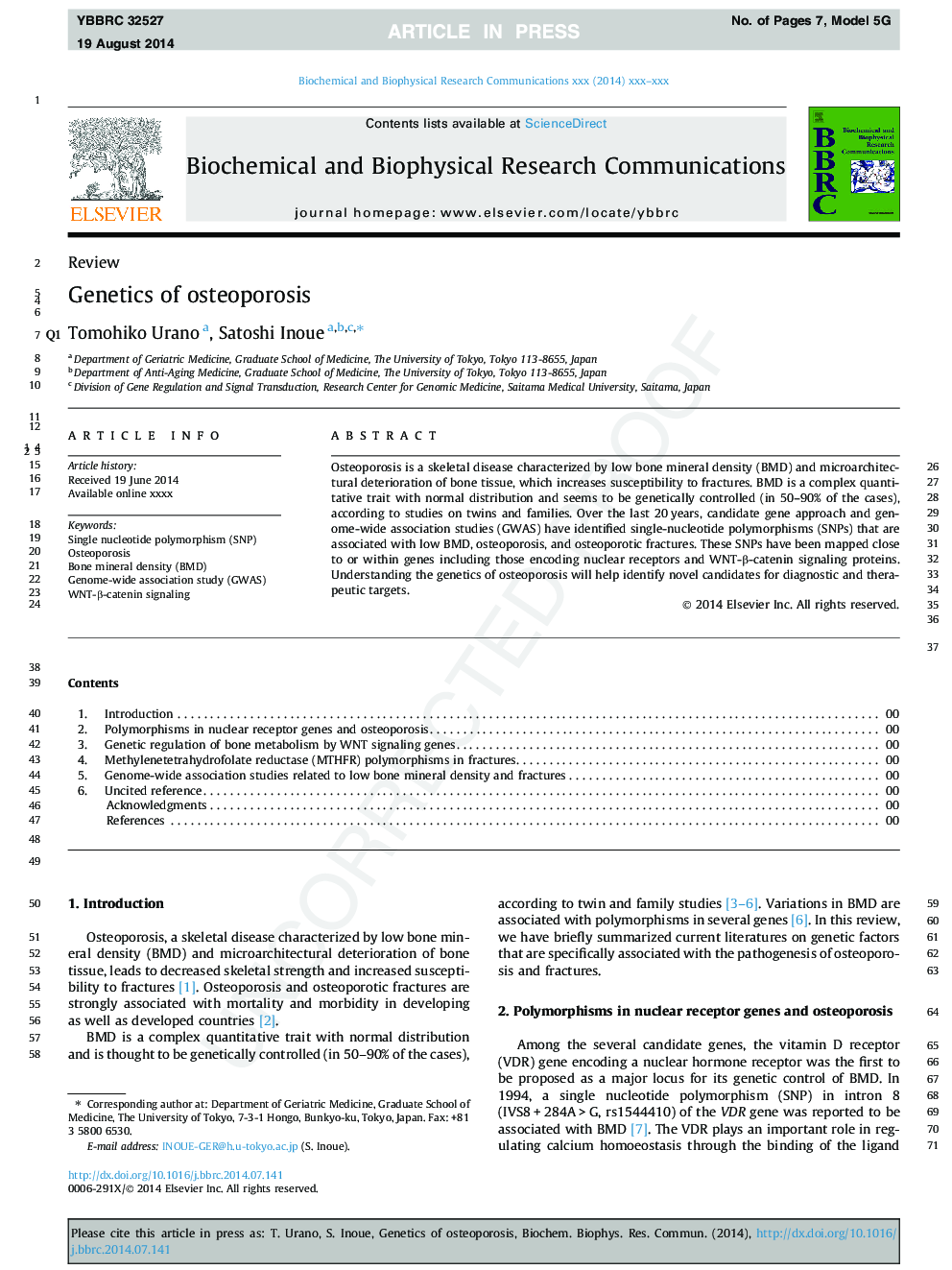| Article ID | Journal | Published Year | Pages | File Type |
|---|---|---|---|---|
| 10753513 | Biochemical and Biophysical Research Communications | 2014 | 7 Pages |
Abstract
Osteoporosis is a skeletal disease characterized by low bone mineral density (BMD) and microarchitectural deterioration of bone tissue, which increases susceptibility to fractures. BMD is a complex quantitative trait with normal distribution and seems to be genetically controlled (in 50-90% of the cases), according to studies on twins and families. Over the last 20 years, candidate gene approach and genome-wide association studies (GWAS) have identified single-nucleotide polymorphisms (SNPs) that are associated with low BMD, osteoporosis, and osteoporotic fractures. These SNPs have been mapped close to or within genes including those encoding nuclear receptors and WNT-β-catenin signaling proteins. Understanding the genetics of osteoporosis will help identify novel candidates for diagnostic and therapeutic targets.
Keywords
Related Topics
Life Sciences
Biochemistry, Genetics and Molecular Biology
Biochemistry
Authors
Tomohiko Urano, Satoshi Inoue,
